Managing Risks
The 4 steps for managing WHS risks, according to Safe Work Australia, are:
- Identify hazards.
- Assess risks.
- Control risks.
- Review control measures.

Image by fizkes, Shutterstock, Shutterstock licence
 Select to learn more
Select to learn more
Select the items on the image to reveal more information.
Image
by alexmillos,
Shutterstock, Shutterstock
licence
Source: Safe Work Australia, Managing risk
Using a risk assessment matrix
A risk assessment matrix tool is used for estimating risk and can help minimise risk to workers, clients and others.
To use the matrix, estimate the likelihood and impact of the hazard on it. Where these 2 points intersect determines the level of risk. If something is high risk, do something about it immediately.
Consider the probability and impact of a risk. The risk assessment matrix estimates whether the risk is low, moderate or high. You then need to determine whether it is acceptable or unacceptable risk.
| Likelihood of risk | Insignificant | Minor | Moderate | Major | Catastrophic |
|---|---|---|---|---|---|
| Almost certain | Moderate | High | Very High | Very High | Very High |
| Likely | Moderate | High | High | Very High | Very High |
| Possible | Low | Moderate | High | High | Very High |
| Unlikely | Low | Low | Moderate | High | High |
| Rare | Low | Low | Moderate | Moderate | Moderate |
 Apply your skills
Apply your skills
Download this sample Home safety risk assessment form. Complete the first three pages of the checklist based on your own home.
Statements checked ‘NO’ may indicate a risk. Use the risk assessment matrix and give a rating to the likelihood and impact/consequence of this risk.
What actions need to be taken to lessen the likelihood of risk?
 Reflect
Reflect
In the case study in a previous section, Clara noticed water on the floor but didn’t take any action.
Clara could have used a risk assessment matrix to determine the likelihood of an accident occurring. Some questions Clara could have asked, and some possible answers are:
- How likely is it that someone could slip on the water?
- It is likely or very likely.
- What impact could a fall have on a person or the organisation?
- It can have a moderate or major impact.
- How acceptable is it to leave the water on the floor?
- It is an unacceptably high risk.
The hierarchy of control
The hierarchy of control is used in WHS to eliminate or minimise risk.
The most effective risk control measure removes a hazard completely, eliminating the risk at its source. Where this is not possible, risk minimisation measures are used.
The hierarchy of control asks you to consider the most effective controls possible, working your way through the lower levels of control until you find one or more measures that effectively control the risk.
Image by Training Improvement Solutions
![]() Select to learn more
Select to learn more
Select each bar to expand and reveal further information about each of the controls and consider how they may apply to infection control.
WHS housekeeping
WHS housekeeping involves setting up workplace and personal routines designed to improve health and safety and minimise risks. This includes activities that you build into your everyday work routines.
Routines to improve health and safety and minimise risks include:
- cleaning up spills
- sitting correctly at your desk with a proper chair and position of the computer
- keeping walkways, exits and traffic areas clear
- maintaining general workplace cleanliness and tidiness
- ensuring emergency exits are unobstructed
- maintaining safe flooring
- allowing adequate work space around equipment and machinery
- ensuring fully functioning services such as lighting, air flow and ventilation, and emergency lighting
- ensuring safe storage areas
- employing correct manual handling techniques
- wearing proper PPE
- displaying adequate and appropriate signage.
 Case study
Case study
This case study is about quickly applying a 'control' to a hazard.
Francesca, a support worker, notices that the common-room floor in the residential aged care home is quite slippery. This is a result of humidity, recent rain, and residents not wiping their feet properly before coming inside.
Francesca decides not to wait for the cleaning staff to deal with the damp floor. After reporting the hazard, she gets a mop from the cleaners’ storeroom to dry off the floor and puts a ‘wet floor’ sign up at each end of the room. Francesca also asks an administration staff member if she could prepare a large sign to go on the outside doors. The sign will ask residents and guests to wipe their feet before entering the facility. Francesca then writes a note in the support workers’ daily record book for other staff to see.
Signs and symbols
The use and design of occupational safety signs must meet the requirements stipulated by the Australian Standard AS1319–1994.
The main purpose of using safety signs is to prevent injury by warning people of a potential hazard in the workplace. These signs may also be used to direct people on how to respond in emergency situations.
You should be able to accurately read and interpret:
- emergency signs
- workplace safety signs
- dangerous goods classifications
- safety instructions.
Emergency signage
Reading the signs can minimise risk and save lives.
Most workplaces have safety signs and symbols. Some signs provide information or direction when responding to emergency situations.
| Evacuation Details | Image |
|---|---|
| Evacuation Sign |

|
| Fire Extinguisher |

|
| First Aid Kit |
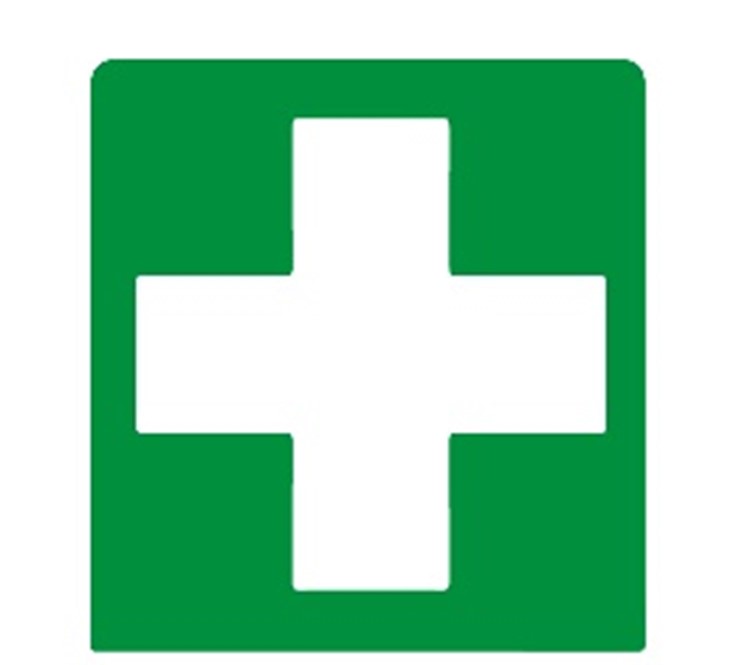
|
| Eye Protection for Chemical Hazards |

|
Safety signs and symbols: poisons
Poisons must be clearly labelled to warn people about their appropriate use. These symbols are shown below.
| Description | Image |
|---|---|
|
The skull-and-crossbones symbol is used as a warning for poisonous substances. The symbol indicates that care should be taken to limit exposure to the poison by avoiding direct contact and ingestion. |

|
|
Alternatively, the poison symbol and words may be presented on a danger sign that acts as a warning when a hazard or a hazardous condition is likely to be life-threatening. |
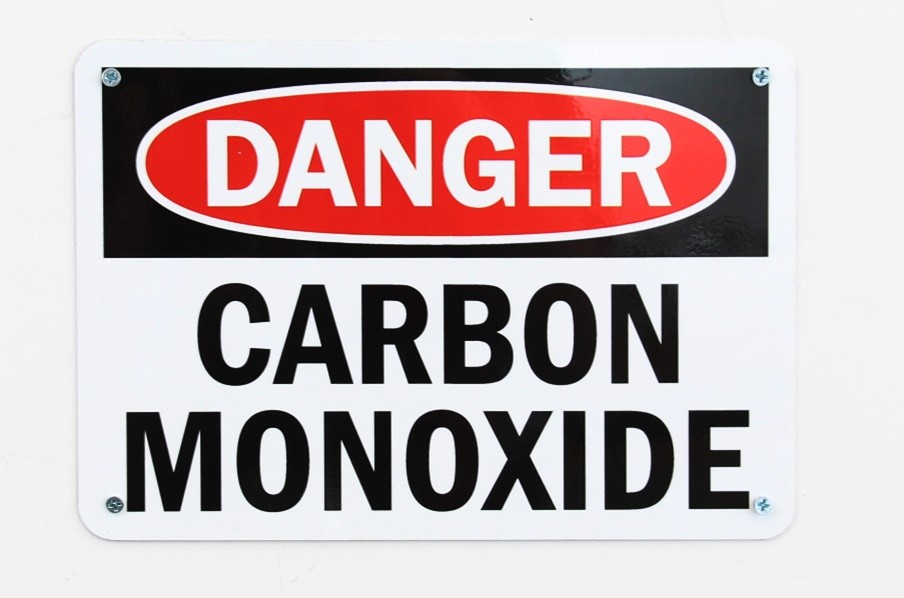
|
Safety signs and symbols: emergency equipment
Emergency equipment signs and symbols inform workers about the location of emergency equipment and help speed up responses to incidents in the workplace. The words and pictures on these signs will always be white on a green rectangular background.
| Evacuation Item | Details & Image |
|---|---|
|
Evacuation map |
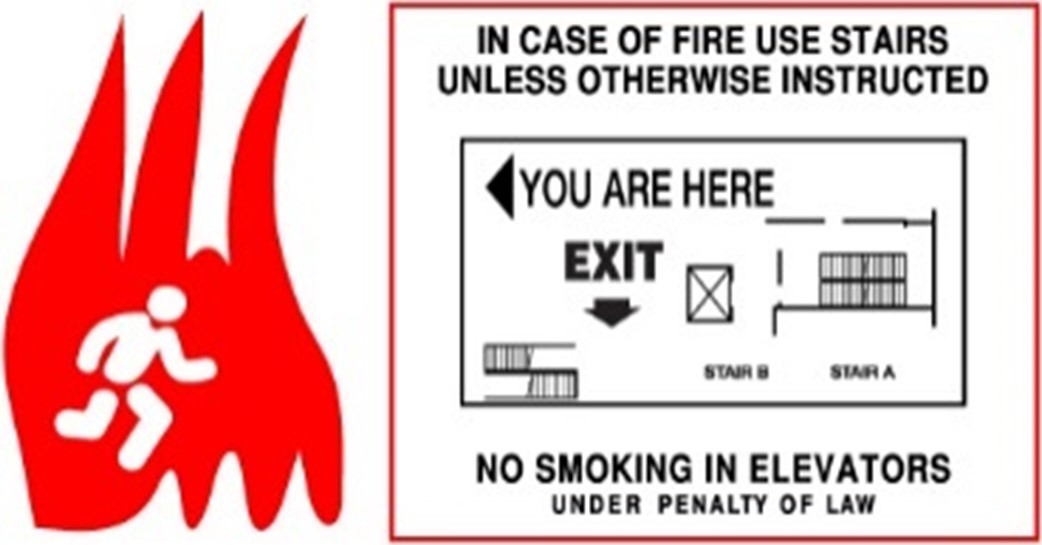
|
| First-aid kit |
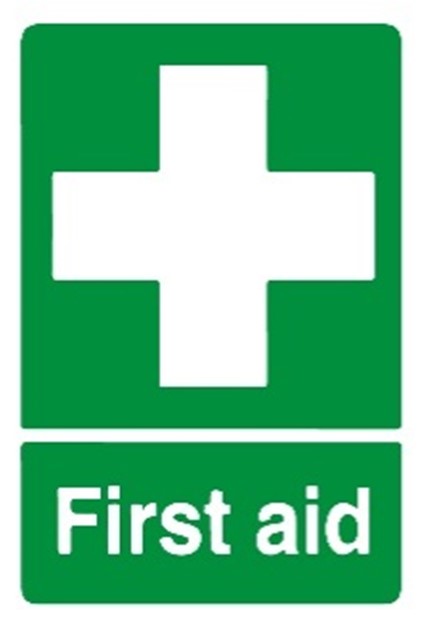
|
| Defibrillator |
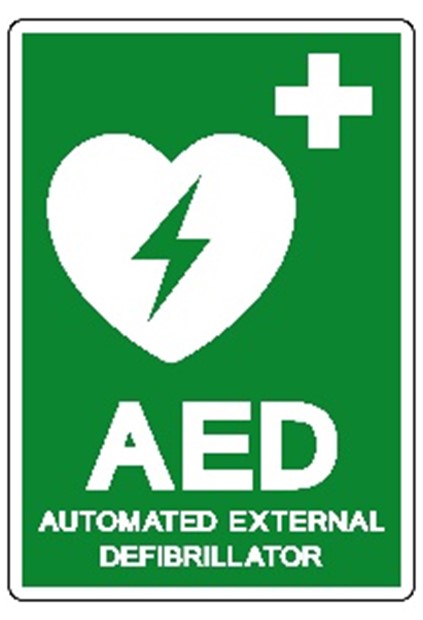
Image by Technicsorn Stocker, Shutterstock, Shutterstock licence |
| Showering area |
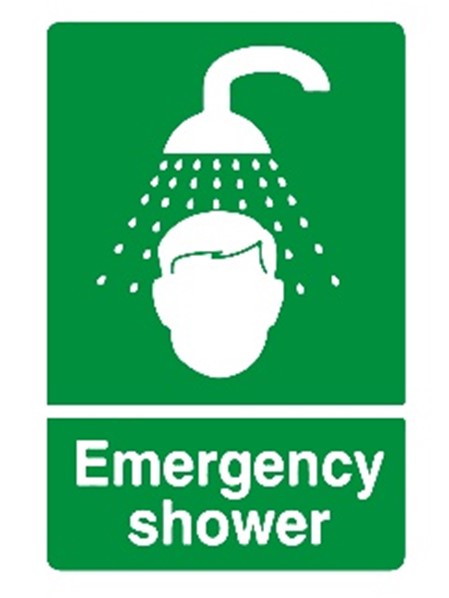
|
Safety signs and symbols: PPE
Wearing appropriate PPE during an emergency can minimise the risk of further injury or illness.
PPE signage is used to show where important protective equipment is stored and when it needs to be worn. These symbols are always white on a blue circular background.
| PPE Item | Details & Image |
|---|---|
|
Googles or eye protection |
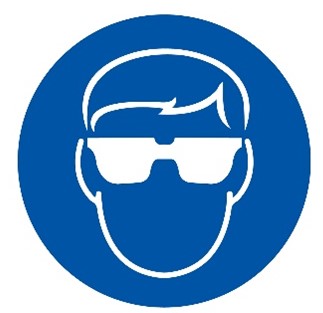
Image by Technicsorn Stocker, Shutterstock, Shutterstock licence |
| Face mask or shield |
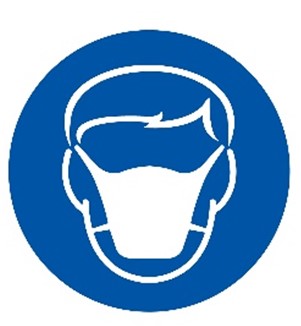
Image by Technicsorn Stocker, Shutterstock, Shutterstock licence |
| Gloves |
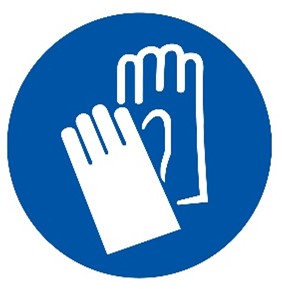
Image by Technicsorn Stocker, Shutterstock, Shutterstock licence |
Safety signs and symbols: specific hazards
There may also be specific signs used in your workplace to indicate specific hazards that could cause harm to a person. Warning signs should always have a black symbol on a yellow triangular background. These signs may or may not include words, depending on the hazard.
Here are some examples of hazard signs found in the community services environment.
| Hazard Type | Details & Image |
|---|---|
|
Flammable material |
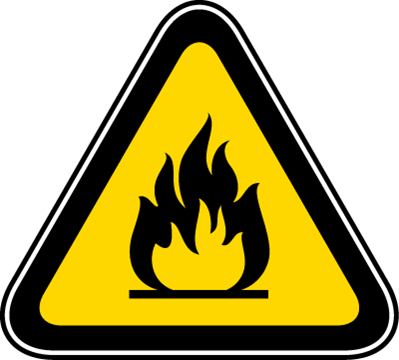
|
Hazardous chemical |

|
Biological hazard |
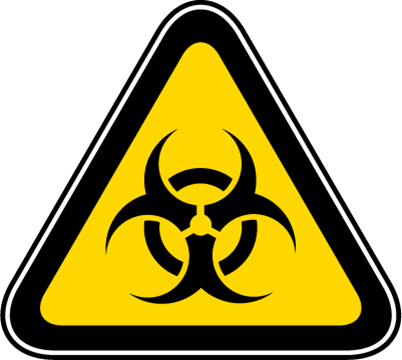
|
Biohazard sharps receptacle |
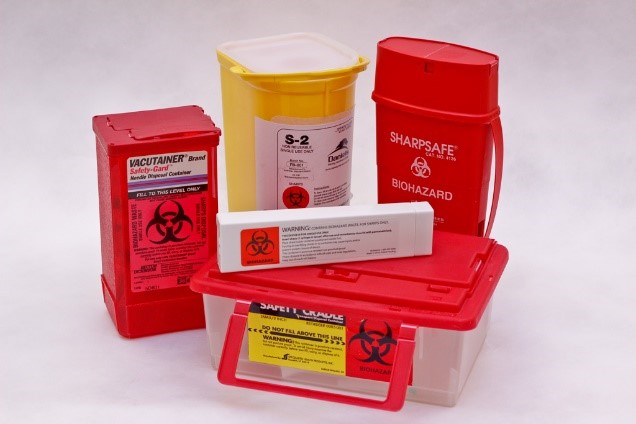
|
Bloodborne pathogen kit |
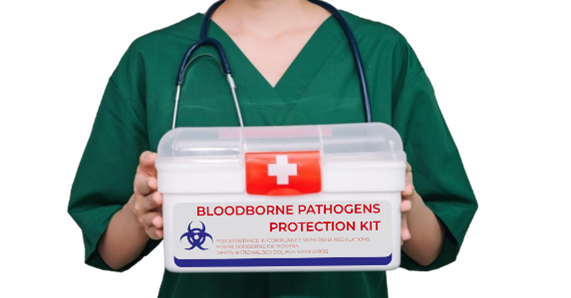
|
Radiation |
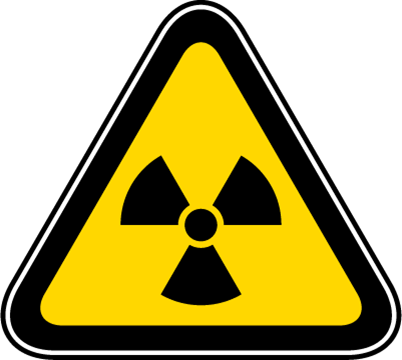
|
Toxic hazard |
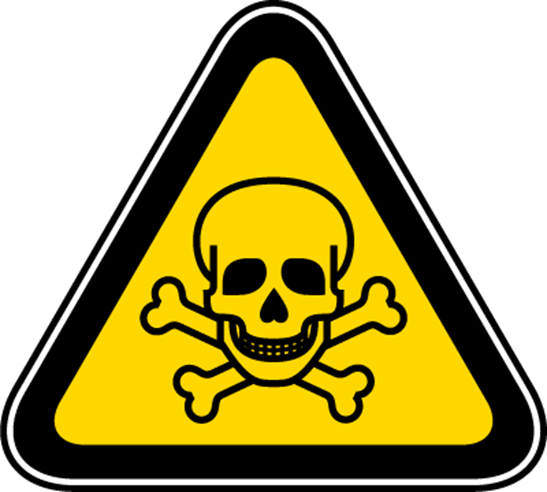
|
Hazardous chemicals classifications
Hazardous chemicals can be found in workplaces, including the homes of clients. You need to be aware of your risk of exposure in this environment.
Hazardous chemicals include:
- paints
- drugs
- cosmetics
- cleaning chemicals
- detergents
- gas cylinders
- flammable liquids and gases
- corrosives
- chemically reactive or highly toxic substances.
Your workplace should have safety data sheets (SDSs) to inform workers of how to manage the risk associated with hazardous chemicals.
 Research to learn
more
Research to learn
more
Find out more about safety data sheets and how they are used.
 Check your
understanding
Check your
understanding
Fill in the blanks by dragging the words into the correct place then select ‘Check’ to see if you are correct.
Background Colour
Font Face
Font Kerning
Font Size
Image Visibility
Letter Spacing
Line Height
Link Highlight
Text Colour